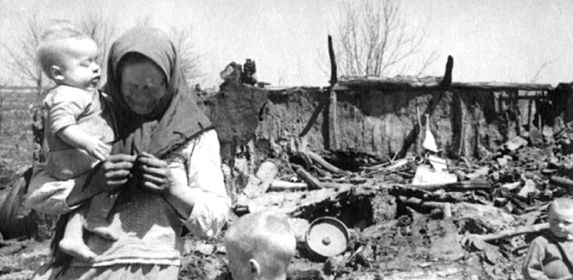Soviet Survivors



Тhe Historical Commission
The interviews owe their origin to the initiative of the well-known Jewish historian Isaak Izrailevich Mints (1896-1991), who at the time of the outbreak of the war taught Soviet history at three Moscow universities and was a corresponding member of the Soviet Academy of Sciences. Mints immediately recognized the historical nature of Germany’s attack on the Soviet Union and in fall 1941 gathered a team of scholars to collect documents from the ongoing war for a future chronicle of the Soviet “Great Patriotic War”. Interviews with contemporary witnesses were among Mints’s top priority. Under his leadership, small teams of researchers began interviewing Soviet combatants at the front. The historians also spoke with partisans and underground fighters, workers in the Soviet war industry, and a multitude of ordinary people – men, women, and children.
The Mints Commission accorded special attention to the fate of Soviet citizens who had come under enemy occupation. In the course of the Soviet winter offensive of 1941/42, the historians interviewed residents of temporarily occupied villages and towns west of Moscow. In the fall of 1942, they spoke with Soviet partisans who had been flown to Moscow from their combat zones in the Belorussian forests and swamps. The commission carried out its main work after the Soviet summer offensive of 1943. In September 1943, two historians accompanied by a stenographer travelled to Kharkov and recorded conversations with 57 surviving inhabitants of the city; this was six weeks after the liberation of Kharkov by the Red Army.
In February 1944, other delegations traveled to Kiev and the Donbass, where they compiled dozens of additional interview transcripts. At the same time, arrangements were made for the establishment of a Ukrainian Commission to collect material and conduct interviews in all the liberated regions of the Ukrainian SSR. A Belorussian Commission on the History of the Great Patriotic War also took up its work at this time. A Crimean Commission formed shortly after the liberation of Crimea later in 1944. The governments of the Soviet republics of Latvia and Estonia, which were still in evacuation, also set up such commissions. In their effort to depict the full human experience of the war, some of the Moscow historians followed the Red Army all the way to Germany. In June 1945, they interviewed recently liberated Soviet forced laborers in Neubrandenburg.
Not only the content of the interviews is important, but also their form. The interviews begin with the interviewee’s birth, childhood and educational and professional path before proceeding to detail war time events. This structure of the conversation was expressly intended by Mints who also instructed his co-workers to conduct the interview in an informal atmosphere and allow interviewees to talk about what they deemed important. In the vast majority of cases, the questions that the historians addressed to their interviewees are not included in the stenographic transcripts; these read as complete autobiographical texts.
As in any interview setting, the questions posed by the historians shaped the testimonies of the witnesses in certain ways. This said, it is obvious that the historians’ aims and methods differed from those of other Soviet authorities - be it the “Extraordinary State Commission for the Establishment and Investigation of the Atrocities of the German Fascist Invaders and Their Accomplices” or the Soviet secret service - who were investigating the liberated territories at the same time in order to assess the behavior of Soviet people under German fascist rule. In contrast to them, the historians did not come as judges; they asked open questions and were able to informally converse with their interlocutors.
In addition to creating interview transcripts, the historians collected many other sources in the liberated areas of the Soviet Union, including diaries and memoirs, inscriptions in former Gestapo prison chambers, and texts of poems and songs written and sung by Ukrainian female forced laborers under Nazi rule. These sources are also included in this edition.
Surprisingly, neither the Soviet secret police (NKVD) nor other security authorities showed any interest in the documentary output of the various historical commissions. Soon after they were written down, the eyewitness accounts were stowed away and forgotten. Publication was out of the question, as the richly shaded personal stories did not fit in with the state dictate of a uniform, heroic war epic. Moreover, in the course of the resovietization of the territories that had fallen into German hands, almost everyone who had lived under Nazi rule was confronted with the stigma of complicity. As a result, the entire experience of Nazi occupation became taboo in the Soviet Union.
The documents collected by the Moscow Commission and the associated commissions in Kiev and Minsk are now stored in three archives: the Scientific Archive of the Institute of Russian History of the Russian Academy of Sciences (IRI RAN) in Moscow, the Central State Archive of Public Associations and Ukrainians (CDAGOU) in Kiev, and the National Archive of the Republic of Belarus (NARB) in Minsk. We would like to thank the archive directors for providing the materials for the production of this digital archive.



